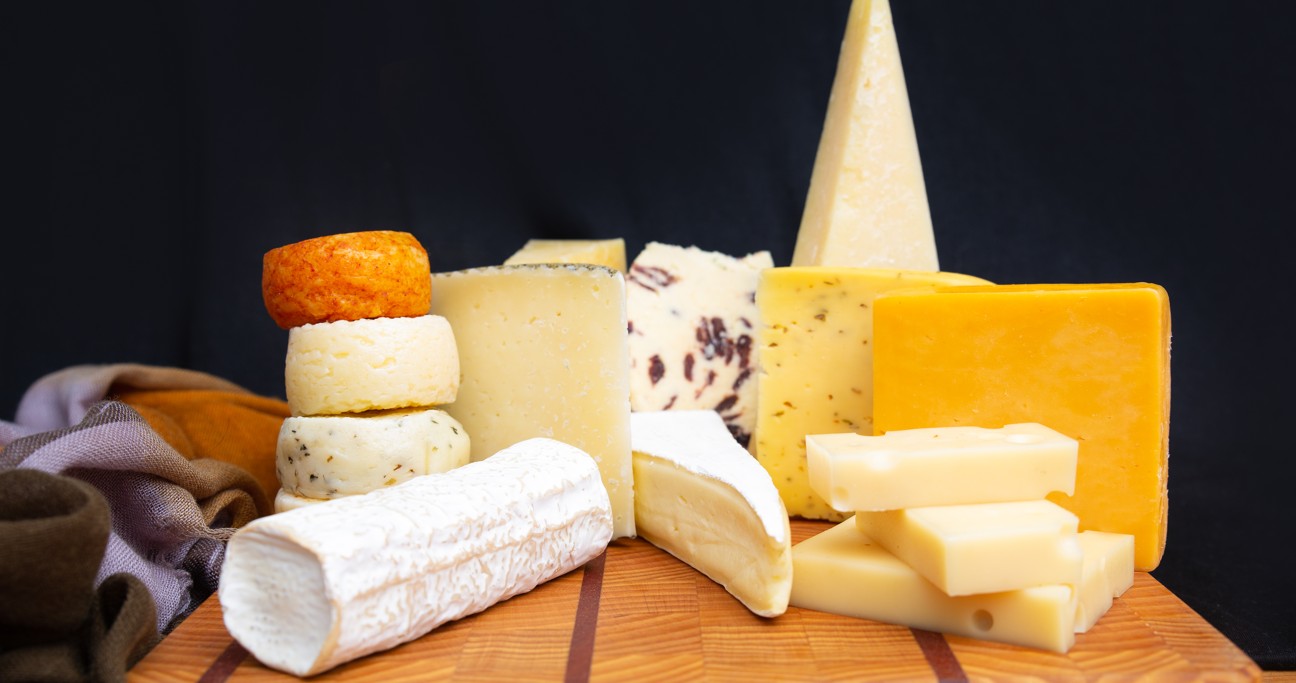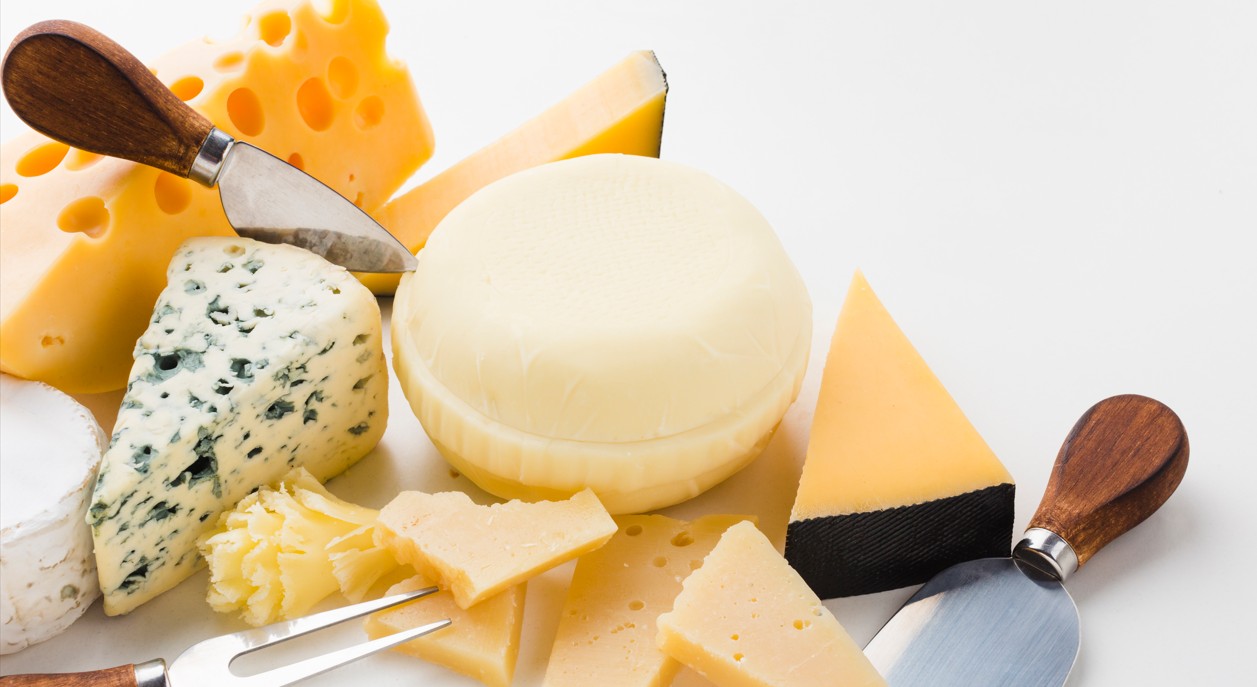Cheese decoded: Understanding an ancient, simple, yet often misunderstood staple

Cheese texture reveals how it’s made and how best to use it—for example, soft, moist fresh cheeses like ricotta or cottage cheese are ideal for lasagna, toast, or desserts like cannoli and are meant to be enjoyed shortly after production.
Cheese, simple and ancient, is beloved across cultures and cuisines.
Whether it's melted on toast or stirred into creamy pasta, this versatile dairy staple is part of daily life for many. But in halal-observant homes, cheese is often misunderstood.
More To Read
Is it halal? What types work best in different dishes? Can lactose-intolerant people enjoy it? And how do you even begin building a cheese board? To truly understand cheese, it helps to start at the source.
How is cheese made?
Cheese is made by combining milk, rennet, and salt. The milk can come from cows, goats, sheep, or buffalo. It's gently heated, then mixed with rennet, an enzyme that helps it separate into curds (like mala) and whey. The curds are then strained, salted, and either eaten fresh or aged to develop more flavour.
Is halal cheese different from regular cheese?
Traditional cheese uses animal-derived rennet. Halal-certified cheese, however, uses vegetarian or microbial rennet. It’s usually labelled clearly, and many soft cheeses like paneer, ricotta, and some cheddars are often halal by default.
Why are cheeses different if they all come from milk?
Cheese varies by the type of milk used, how long it’s aged, and the region it’s from. Cow’s milk cheeses like cheddar or brie are common. Goat cheese is tangy and sharp, while sheep’s milk cheese, like Manchego, is richer and slightly sweet.
Texture and colour: How cheese speaks before you taste it
Cheese texture says a lot about how it’s made and how to use it. Fresh cheeses like ricotta or cottage cheese are soft and moist, perfect for lasagna, toast, or desserts like cannoli. They’re meant to be eaten soon after being made.
At the other extreme is parmesan, a hard cheese with a dry, crumbly texture from long ageing. It’s not meant for biting into, but rather shaving or grating onto pasta, soups, or risottos for a hit of sharp flavour.
Semi-soft to semi-hard cheeses like Gouda, Havarti, and Cheddar start smooth and soft when young, great for slicing and melting. As they age, they become firmer and more flavourful, ideal for sandwiches or snacking.
 An assortment of gourmet cheeses with cheese knives. (Photo: Freepik)
An assortment of gourmet cheeses with cheese knives. (Photo: Freepik)
Mozzarella is unique. It’s not soft like ricotta, but stretchy because of a kneading step called pasta filata. It melts beautifully, which is why it's used on pizza and eggplant parmesan. The fresher the mozzarella, the softer and milkier it tastes.
Texture also tells you how to prepare cheese, whether to slice, melt, crumble, or grate it. Firmness often indicates fat and moisture content, which affects cooking. For example, halloumi is firm enough to fry without melting, perfect for grilling.
Colour matters too. Most cheeses range from pale yellow to ivory, but exact hues depend on the animal’s diet, milk type, and whether colouring agents like annatto are added. Cheddar, for instance, can be white or deep orange, even if aged the same.
Goat cheese is usually bright white since goat milk lacks beta-carotene. Aged cheeses like brie may have a beige rind but stay pale inside.
Hard cheeses
Cheeses like Parmesan, Pecorino Romano, and Grana Padano are pale with salty, nutty flavours. Best grated onto hot dishes like pasta or risotto. Aged cheeses like Manchego or aged Gouda are firmer and often sliced for cheese boards or tapas.
Semi-hard cheeses
Cheddar, Gruyere, Edam, and Monterey Jack range in colour and flavour, mild to sharp, buttery to nutty. These are very versatile: great for melting in grilled cheese or mac and cheese, or sliced for sandwiches.
Semi-soft cheeses
Havarti, Provolone, and Fontina melt well and are mostly used in hot dishes or sandwiches. Smoked versions add a rich flavour and pair well with meats.
Soft cheeses
Brie and Camembert are creamy with earthy notes. They’re best served spread on bread or baked for a rich treat. Goat cheese and feta are tangy and crumbly—great on salads, flatbreads, or roasted vegetables.
Spoonable cheeses
Ricotta and cream cheese are mild and creamy. Use them in baking, pasta fillings, or simply spread on toast.
Fresh cheeses
Mozzarella, Burrata, Paneer, and Halloumi have mild flavours and soft textures. Mozzarella works well on pizza or salads. Burrata’s creamy centre makes it perfect on pasta or toast. Paneer and halloumi hold their shape when grilled or fried.
Blue cheeses
Gorgonzola, Roquefort, and Stilton are bold and veined with blue-green mould. Best crumbled into salads, sauces, or over steak.
Processed and specialty cheeses
American cheese, Velveeta, Boursin, and herbed spreads are mild and creamy, often used in burgers, dips, or snack boards.
How should cheese be treated and stored?
How you treat cheese affects its taste. Cheesemonger Liah Wang of Milk and Co told *Tasty* that most people ruin cheese by cutting it wrong.
“Cheese should be approached with respect, like a delicate dessert, she says. “Don’t saw at it or scoop. Cut it to preserve its shape and texture.”
She says Brie or Camembert should be cut into even wedges like a cake. Semi-hard cheeses like Gouda should be sliced into batons or triangles, and hard cheeses like Parmesan broken into shards.
Feta can be cubed, while Halloumi is best sliced thick for frying.
For storage, wrap cheese in wax or parchment paper and store it in an airtight container in the fridge. Avoid plastic wrap, as it affects flavour. Soft cheeses last a few days; hard cheeses can keep for weeks if stored properly.
How do you become a cheese lover?
Liah says it’s best to start with milder varieties.
“Many people are intimidated by blue cheese or aged cheddar, but starting with soft, fresh cheeses like mozzarella, cream cheese, or gouda allows the palate to adjust gradually,” she says.
“Halloumi, with its firm texture and mild saltiness, becomes a favourite once pan-fried until golden and served with tomatoes or warm bread.”
Is cheese limited for people with lactose intolerance?
Not necessarily. Aged cheeses like Parmesan, Cheddar, and Gruyere have very low lactose levels, making them easier to digest.
How do you build a cheese board?
Whether for guests, a picnic, or a cosy night in, a cheese board is all about balance.
Start with three or four cheeses: one soft (like Brie), one hard (like Cheddar), and something bold (like blue cheese). Cut each into a shape that suits its texture.
Add grapes, dried fruits, nuts, halal cold cuts (like smoked turkey), crackers or warm bread, and maybe a bit of jam or chutney. Let the cheese sit at room temperature for 30 minutes before serving to enhance flavour.
Cheese isn’t just about taste, it’s about curiosity, discovery, and finding what fits your diet and meals. Whether sprinkled on pasta, melted on bread, or paired with fruit, there’s a cheese for every person and every table.
Top Stories Today











































